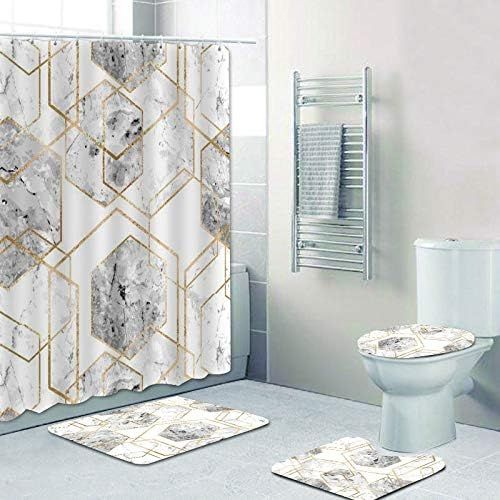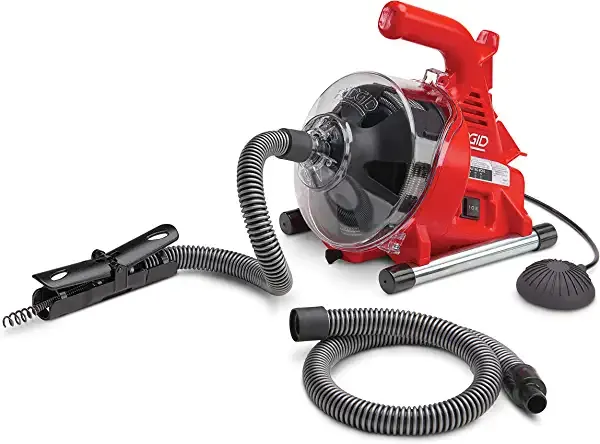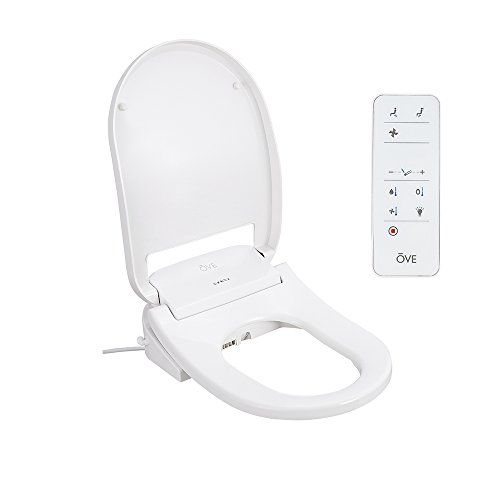Why Is My Bathroom Sink Filling Up With Water
Are you frustrated by the constant water buildup in your bathroom sink? Wondering why it’s happening and how to fix it? Look no further, because this article is here to help you understand the possible causes and solutions for this annoying issue.
From a clogged drain to faulty stoppers, plumbing vent issues to sewer line blockages, there could be several reasons why your sink is filling up with water. Don’t worry, though – we’ve got you covered.
In this article, we’ll explore each potential cause in a logical, informative, and technical manner, providing you with the knowledge you need to troubleshoot and resolve the problem. We’ll also discuss the importance of professional help and give you some prevention tips to keep your bathroom sink in top shape.
Key Takeaways
- Common causes of bathroom sink water buildup include improper drain slope, incorrect pipe size or type, inadequate water flow due to small or restrictive pipes, and improper installation.
- Prevention and maintenance tips include regularly cleaning out debris, avoiding pouring grease or oil down the drain, using drain covers to prevent hair and debris clogs, and regularly cleaning the sink to prevent grime buildup.
- Choosing the right pipes is important, such as using pipes with appropriate diameter for proper water flow, selecting corrosion-resistant and unclogging materials, and considering specific plumbing system requirements for pipe selection.
- Seeking professional help is recommended as professionals can accurately diagnose and fix underlying causes, and professional installation ensures reliable and efficient solutions. Regular cleaning and maintenance, as well as avoiding pouring grease or oil, are important preventive measures to avoid future water buildup.
Clogged Drain
Oh no, looks like your bathroom sink is playing a little game of ‘water park’ due to a clogged drain! Don’t worry, though, there are some simple and effective ways to unclog it.
One method is to use a plunger. Just cover the overflow opening with a wet cloth and plunge away.
Another option is to remove the sink stopper and clean out any debris that may be causing the clog.
If those methods don’t work, you can try using a drain snake or a mixture of baking soda and vinegar.
Preventing future clogs is also important. Regularly cleaning the sink stopper and using a hair catcher can help keep your drain clear.
Remember, maintenance is key to keeping your bathroom sink flowing smoothly.
Faulty Stopper
The faulty stopper in your bathroom sink is causing it to become clogged. Sink stoppers are an essential component that helps to regulate the flow of water and prevent debris from entering the drain.
To troubleshoot a faulty sink stopper, follow these steps:
-
Check for debris: Remove the stopper and clean it thoroughly. Hair, soap residue, and other particles can accumulate and hinder its functionality.
-
Adjust the stopper mechanism: Some stoppers have adjustable mechanisms that control the water flow. Ensure that it’s properly aligned and functioning correctly.
-
Lubricate the stopper: Apply a small amount of plumber’s grease or silicone lubricant to the stopper’s moving parts. This’ll help it move smoothly and prevent it from getting stuck.
-
Consider replacing the stopper: If the stopper is damaged beyond repair, it may be necessary to replace it. Consult a professional or refer to the manufacturer’s instructions for guidance.
By performing regular sink stopper maintenance and troubleshooting, you can prevent clogs and ensure that your bathroom sink drains properly.
Plumbing Vent Issues
To fix plumbing vent issues, you’ll need to address the ventilation system in your bathroom.
Plumbing vent installation plays a crucial role in preventing water from backing up into your sink. If your bathroom sink is filling up with water, it could be due to a clogged or improperly installed plumbing vent.
Start by checking if the vent pipe is clear of any debris or obstructions. Use a flashlight to inspect the vent pipe for any signs of damage or leaks. If you notice any issues, such as cracks or loose connections, you may need to repair or replace the vent pipe.
Troubleshooting plumbing vents can be challenging, so it’s best to consult a professional plumber who can assess the situation and provide the appropriate solution.
Water Supply Problems
Having trouble with your water supply? If your bathroom sink is filling up with water, it could be due to water pressure issues or a leak in the supply line. Low water pressure can be caused by a variety of factors, such as clogged pipes, faulty pressure regulators, or problems with the municipal water supply. To diagnose the problem, you can start by checking the water pressure at other faucets in your home. If the pressure is consistently low, it may be necessary to contact a plumber to assess and fix the issue. Another potential cause of a sink filling up with water is a leak in the supply line. To detect a leak, you can use a simple method like turning off all faucets and checking the water meter to see if it continues to run. If you suspect a leak, it’s essential to address it promptly to prevent further damage.
Sewer Line Blockage
If you’re experiencing a sewer line blockage, there are a couple of key points to consider.
One common cause is tree root intrusion, where roots grow into the pipes and block the flow of sewage.
Another issue can be accumulated debris, such as dirt, leaves, and other materials that can build up over time and obstruct the sewer line.
Additionally, grease can also accumulate in the pipes, causing a blockage and preventing proper drainage.
Tree root intrusion
Tree roots have invaded your bathroom sink, causing it to fill up with water and creating a frustrating and overwhelming situation.
Tree root intrusion occurs when the roots of nearby trees grow into your sewer line, blocking the flow of water and causing backups.
Preventing root intrusion is crucial to avoid such plumbing issues. Regularly inspect your yard for signs of tree damage, such as cracked or lifted pavement, as this can indicate root growth.
Additionally, consider planting trees and shrubs away from your sewer lines to minimize the risk of intrusion.
If you suspect tree roots are causing your bathroom sink to fill up, it’s important to address the issue promptly. Contact a professional plumber who can use specialized equipment to remove the roots and restore proper water flow.
Accumulated debris and grease
The accumulation of debris and grease can lead to plumbing issues in your bathroom sink, causing blockages and backups. To prevent buildup and ensure proper maintenance, follow these steps:
-
Regularly clean your sink to remove any accumulated debris and grease. Use a mild detergent or a mixture of vinegar and baking soda to dissolve grease and prevent clogs.
-
Install drain strainers in your sink to catch hair, soap residue, and other debris. This will prevent them from entering the pipes and causing blockages.
-
Avoid pouring grease down the drain. Grease can solidify and clog the pipes. Instead, let it cool and dispose of it in the trash.
By following these preventive measures and practicing proper maintenance, you can keep your bathroom sink free from blockages and backups. Regular cleaning and taking care with what goes down the drain will help ensure the smooth functioning of your plumbing system.
Faulty Drainpipe
One possible sentence could be: "You might be dealing with a faulty drainpipe if your bathroom sink is mysteriously filling up with water." When it comes to sink overflow and slow drainage, a faulty drainpipe could be the culprit behind your bathroom sink woes. The drainpipe is responsible for carrying the water from your sink to the main sewer line. If it becomes clogged or damaged, water will not be able to flow properly, resulting in a backup and the sink filling up. To better understand the issue, let’s take a look at a comparison between a healthy drainpipe and a faulty one:
| Healthy Drainpipe | Faulty Drainpipe |
|---|---|
| Smooth flow of water | Clogged or damaged |
| Water drains quickly | Slow drainage |
| No backups or overflow | Sink filling up |
If you notice any of the signs mentioned in the faulty drainpipe column, it’s important to address the issue promptly to prevent further damage and inconvenience.
Overflowing Toilet
If you’ve ever experienced an overflowing toilet, you know just how messy and inconvenient it can be. But fear not, there are ways to prevent this from happening again and fix a clogged toilet.
First of all, make sure you have a plunger handy. This simple tool can often solve the problem by creating pressure and dislodging the blockage. If the plunger doesn’t work, you can try using a toilet auger. This flexible rod with a coiled end can reach deeper into the pipes and break up stubborn clogs.
Another preventive measure is to avoid flushing large amounts of toilet paper or non-flushable items down the toilet. Regular maintenance, such as periodic cleaning and using enzyme-based cleaners, can also help prevent clogs.
Remember, a little prevention can go a long way in avoiding the hassle and mess of an overflowing toilet.
Incorrect Installation
If you’re experiencing a bathroom sink filling up with water, it could be due to an incorrect installation. One possible reason is an improper drain slope, where the pipe leading from the sink to the main drain isn’t angled correctly. This can cause water to accumulate instead of flowing down properly.
Another reason could be an incorrect pipe size or type, which can result in limited water flow and cause backups. It’s important to ensure that these installation aspects are properly addressed to prevent any further issues.
Improper drain slope
To prevent your bathroom sink from filling up with water, make sure the drain slope is properly installed. The slope of the drain pipe determines how efficiently water flows out of your sink and into the sewer system. If the slope is too flat or uneven, water can collect and cause backups. Drainage improvement is crucial in preventing this issue. Proper maintenance also plays a key role in keeping your sink drain flowing smoothly. Regularly clean out any debris that may accumulate in the drain, such as hair or soap scum. Additionally, avoid pouring grease or oil down the drain as they can solidify and clog the pipes. By ensuring a proper drain slope and practicing good maintenance habits, you can prevent your bathroom sink from filling up with water.
| Emotion | Reason | Action |
|---|---|---|
| Frustration | Inefficient drain slope causes backups | Properly install drain slope |
| Satisfaction | Clear drains promote smooth water flow | Regularly clean out debris |
| Awareness | Grease and oil clog pipes | Avoid pouring them down the drain |
Incorrect pipe size or type
Using the wrong size or type of pipes can lead to significant issues in your drainage system. Improper installation can cause water to flow slowly or not at all, resulting in a buildup of water in your bathroom sink. Additionally, inadequate water flow can occur if the pipes are too small or if they’re made of materials that restrict water movement.
To avoid these problems, it’s important to ensure that the pipes in your drainage system are the correct size and type for your specific needs. Here are some key points to consider:
- Choose pipes that have the appropriate diameter to allow for proper water flow.
- Use materials that are resistant to corrosion and clogging.
- Consider the specific requirements of your plumbing system to determine the best pipe type.
By selecting the right pipes and installing them correctly, you can prevent your bathroom sink from filling up with water and maintain a properly functioning drainage system.
Professional Help and Prevention Tips
Seeking professional assistance or implementing preventive measures can effectively address the issue of your bathroom sink filling up with water, providing you with long-term peace of mind. While some individuals may choose to tackle the problem themselves, opting for professional help ensures a more reliable and efficient solution. Professionals have the expertise to accurately diagnose the underlying causes, whether it’s a clogged drain, faulty plumbing, or a problem with the sewer line. They can then employ the appropriate tools and techniques to fix the issue effectively.
On the other hand, taking preventive measures can help avoid future problems. By following these simple tips, you can keep your bathroom sink free from water buildup:
| Prevention Tips | Benefits |
|---|---|
| Use drain covers | Prevents hair and debris from clogging the drain |
| Regular cleaning | Removes accumulated grime and prevents buildup |
| Avoid pouring grease or oil down the drain | Prevents clogs and blockages |
By consulting professionals and implementing preventive measures, you can ensure a smoothly functioning bathroom sink and avoid the inconvenience of water buildup.
Frequently Asked Questions
How can I fix a clogged drain in my bathroom sink?
To unclog a bathroom sink drain, try using a plunger or a drain snake to remove any debris or blockage. Regular drain maintenance, such as using baking soda and vinegar, can help prevent future clogs.
What should I do if the stopper in my bathroom sink is not working properly?
If the stopper in your bathroom sink is not working properly, you may need to replace it. You can try doing it yourself by following a step-by-step guide, or seek professional help if needed.
Are plumbing vent issues a common cause of a bathroom sink filling up with water?
Plumbing vent issues, such as clogs or blockages, can indeed cause a bathroom sink to fill up with water. Identifying common sink drainage problems and troubleshooting the plumbing vent system can help resolve the issue.
What could be causing water supply problems in my bathroom sink?
Water pressure issues in your bathroom sink may be caused by a faulty faucet. This can result in reduced or inconsistent water flow. It is important to address this problem promptly to ensure proper functioning of your sink.
How do I know if there is a sewer line blockage causing my bathroom sink to fill up with water?
To determine if a sewer line blockage is causing your bathroom sink to fill up with water, you can schedule a sewer line inspection. A professional plumber can use drain cleaning techniques to identify and clear any obstructions.
Conclusion
So, if you find that your bathroom sink is filling up with water, it’s important to investigate the possible causes.
A clogged drain is often the culprit, which can be resolved by using a plunger or drain cleaner.
Faulty stoppers or plumbing vent issues can also cause water to back up.
In some cases, water supply problems or a sewer line blockage may be to blame.
It’s essential to check for any faulty drainpipes or overflowing toilets as well.
If you’re unsure about the cause, it’s best to seek professional help to resolve the issue and prevent future problems.










.jpg)








